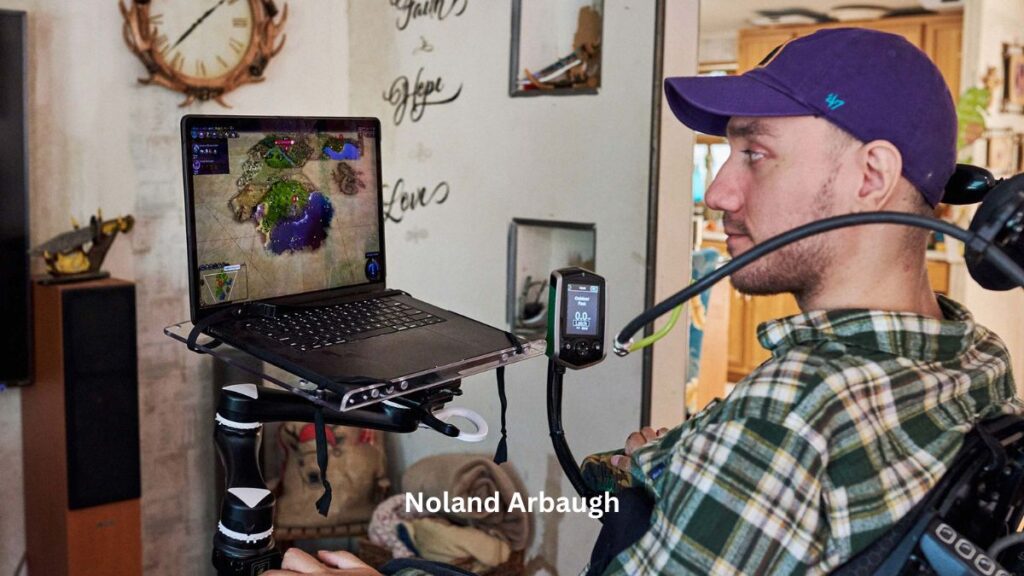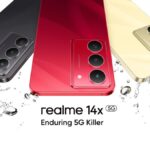
Just four months ago, Noland Arbaugh underwent surgery where a small circle of bone was removed from his skull and ultra-thin sensor tentacles were inserted into his brain. A small computer, about the size of a stack of quarters, was placed over the opening, which was then sealed. Arbaugh, paralyzed below the neck, is the first patient in a clinical trial testing Elon Musk’s Neuralink device, and his initial progress has generated significant excitement.
Search
Recent Posts:
- OpenAI Brings ChatGPT to be used in WhatsApp: Here’s How It Works and What You Can Do To Use It.
- Realme 14x 5G: A Budget Smartphone With Premium Features.
- Exploring Apple Genmoji: A New Era of Custom Emoji Creation.
- 2024 United States Presidential Election: Donald Trump Declares Victory in 2024 Presidential Election
Arbaugh’s Journey with Neuralink: Overcoming Challenges in the Pursuit of Medical Innovation
Collaborating with engineers, Arbaugh, 30, trained computer programs to translate the firing of his brain neurons into the movement of a cursor. His proficiency quickly grew, enabling him to compete in Mario Kart against his stepfather and play an empire-building game late into the night. However, over the ensuing weeks, about 85 percent of the device’s tendrils slipped out of his brain. Neuralink’s team had to adjust the system for him to regain control of the cursor. Although he had to learn a new method for clicking, he still managed to move the cursor across the screen. Neuralink advised against surgery to replace the threads, stating the situation had stabilized.
The setback became public recently, and while initially disappointing, Arbaugh said it was worthwhile for Neuralink to advance in a tech-medical field aiming to help people regain speech, sight, or movement. From a small desert town in Arizona, Arbaugh has become an enthusiastic spokesperson for Neuralink, one of at least five companies leveraging decades of academic research to develop devices that could restore functions in people with disabilities or degenerative diseases.
Breaking Boundaries: Noland Arbaugh’s Journey with Neuralink
Neuralink recently announced it had received permission from the US Food and Drug Administration to continue testing implants in additional patients. Arbaugh has been paralyzed since a swimming accident, which left him immobilized from the fourth vertebra in his neck down. After the implant was embedded in late January, he worked long hours with Neuralink staff to link the neuronal patterns in his brain to his intended actions. Although the work was tedious and repetitive, he found it rewarding.
Upon completing the training, engineers gave Arbaugh control of the cursor on a computer. On his first day of independent control, he broke a 2017 world record for speed and precision in cursor control. “It was very, very cool,” Arbaugh said. His training sessions have now been reduced to remote work in four-hour blocks, focusing on tasks like spelling words. He envisions using the technology for making sign language letters or writing on a chalkboard.
Navigating Challenges in Brain-Computer Interface Technology
Despite the progress, the Neuralink device continued to lose its connection, with tendrils gradually slipping out of his brain tissue. When only about 15 percent of the threads remained, he lost control of the cursor entirely. Engineers recalibrated the programs, allowing him to perform most tasks he could do before. He now uses a tool that enables him to click by hovering the cursor over the intended item, as he can no longer click using the previous method.
This flawed implant highlights concerns within the brain-computer interface field. The small, round device implanted in the skull is meant to keep the thin electrode tendrils in place, but the tendrils can dislodge, similar to a finger in a wobbling pie. Arbaugh’s brain exhibited greater movement than engineers had expected, prompting them to amend the surgical strategy for implanting the threads deeper in the brain of future patients.
Advancements and Challenges in Brain-Computer Interface Technology
Arbaugh’s team initially expected his brain to form scar tissue around the threads at the base, which they believed would help secure them. He has the option to leave the study after a year but expects to continue working with Neuralink. The initial study is projected to take about six years to complete.
Other leading companies in the field have adopted different approaches. Synchron, based in New York, has avoided the delicate brain tissue by implanting a tiny metal tube near the motor cortex through a blood vessel. Precision Neuroscience, also based in New York, has placed a flexible strip equipped with sensors on the surface of the brain and is reviewing data from temporary placements. Paradromics is testing its implantable device in sheep and aims to begin human trials within a year.
All of these efforts are closely regulated by the FDA, which evaluates the risks and benefits of these procedures. Initially, the use of such devices will likely be considered for people with major disabilities or degenerative diseases. Arbaugh hopes the technology will first restore lost functions and eventually enhance capabilities, emphasizing the importance of retaining humanity in the process.
To read more topics, please visit: https://insightfulbharat.com





